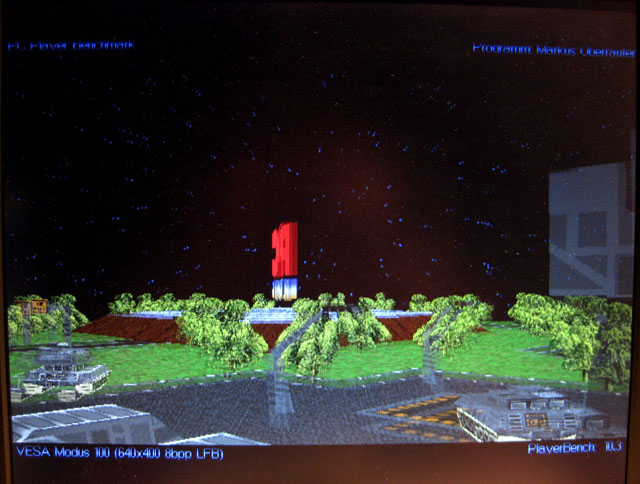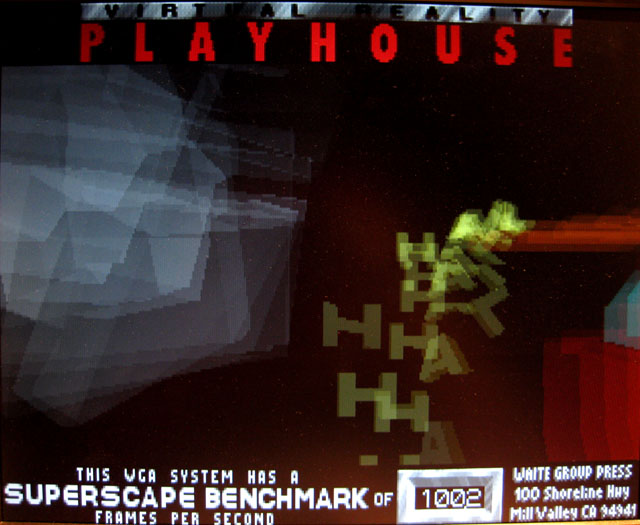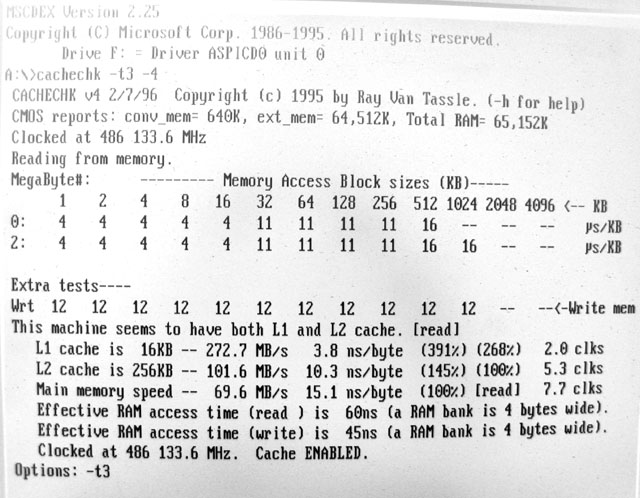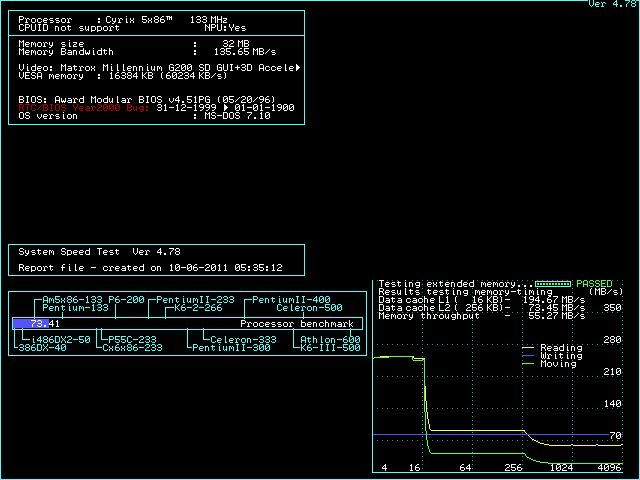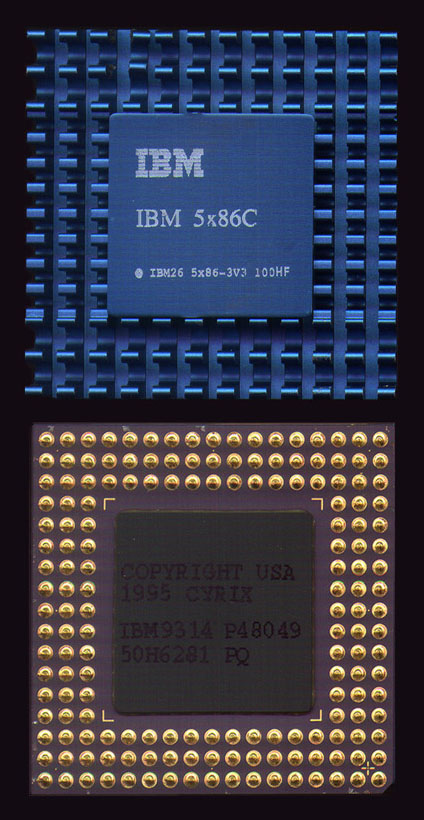First post, by feipoa
- Rank
- l33t++
I've run some initial tests overclocking an IBM 100HF to 133 MHz. I beleive the IBM 100HF may be a 120 MHz Cyrix part in disguise since they were sold in Gainberry upgrade kits marked as Cyrix 5x86-120GP parts.
For this OC test, I used a Biostar MB8433-UUD v1.0 with BIOS date 05/20/1996. I added a 12V fan to the top of the IBM heatsink and ran the CPU at 4V. I set the FSB to 66 MHz and used a 1:2/3 FSB-to-PCI divisor in the BIOS. CLKMUL was set at 2x. Note that Cyrix 5x86 CPUs don't like to run at 5V. I tried to run this CPU at 5V and 100 MHz and the screen wouldn't come up.
I used 256KB of double banked, 15ns L2 cache, 1 WS for Memory Read, and 0 WS for Memory Write. Cache timings were set at 3-2-2-2. Ram was 1 stick of 32 MB EDO, 60ns. So the PCI BUS is 66 MHz x 2 / 3 = 44 MHz. The Matrox G200 card held up fine in DOS at 44 MHz. I also added a fan to the Matrox's heatsink.
[EDIT (Sept. 2015): Latest stability tests reveailed that a 2 ws DRAM READ was required for long-term stabiliy, with the ideal CPU voltage being in the 3.73-3.75 V range. Also, I/O Recovery Time needs to be set to 4BCLK instead of 2BCLK.]
These are pretty much the fastest 486 Cachechk and Speedsys scores I've seen. Images are attached, but I'll also type them out. Quake finished running, but the score was less than my real Cyrix 5x86-133 at 16.X fps. Skipped frames?
Speedsys
Score: 73.41
RAM: 135.6 MB/s
Video: 60234 KB/s
L1: 194.67 MB/s
L2: 73.75 MB/s
Memory: 55.27 MB/s
Cachechk
L1: 272.7 MB/s
L2: 101.6 MB/s
Memory: 69.6 MB/s
RAM access time (read): 60 ns
RAM access time (write): 45 ns
3DBench2
Score: 100.2
PcpBench
VESA Modus 100 (640x400 8bpp LFB)
Score: 10.3
Plan your life wisely, you'll be dead before you know it.
